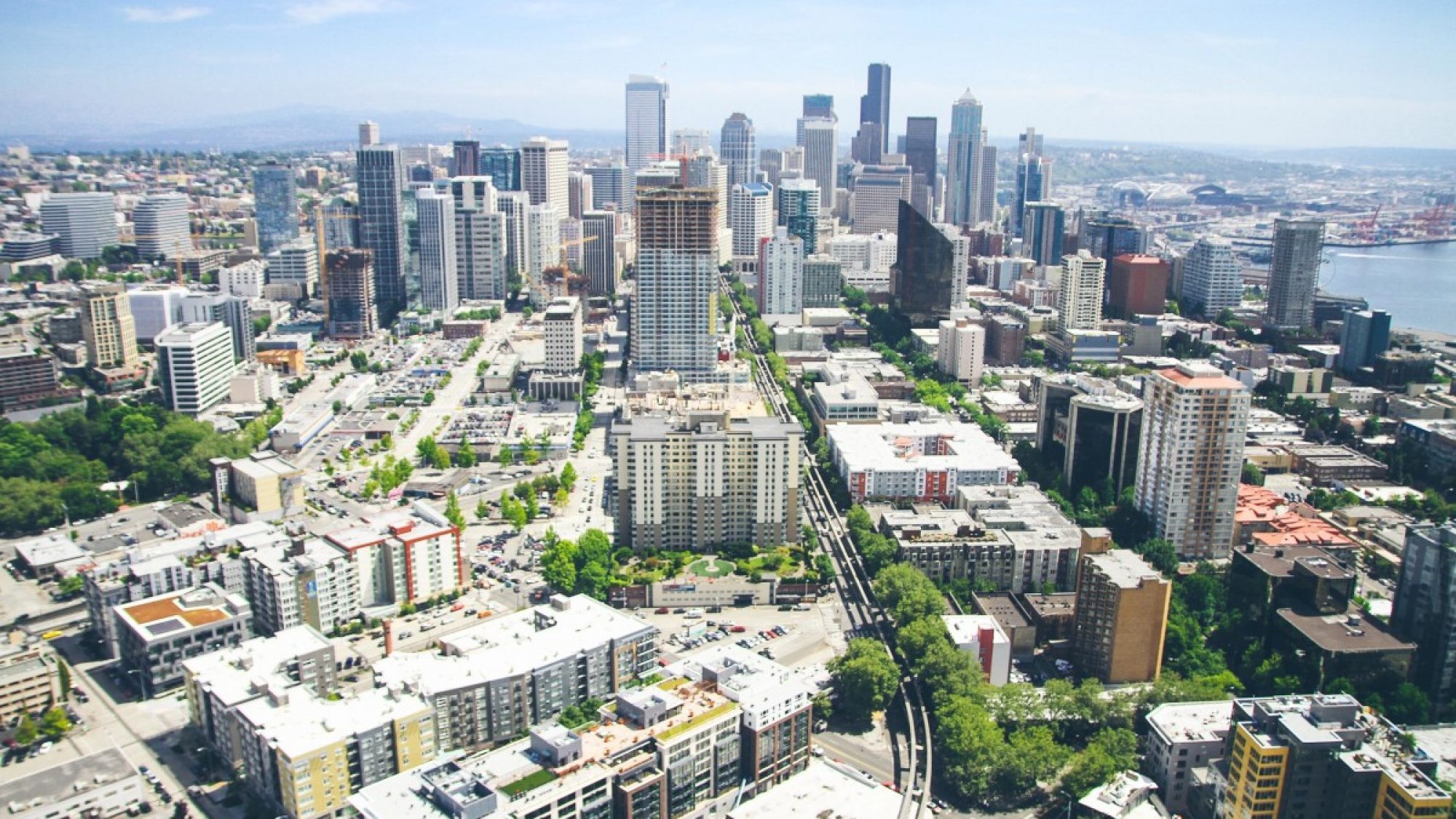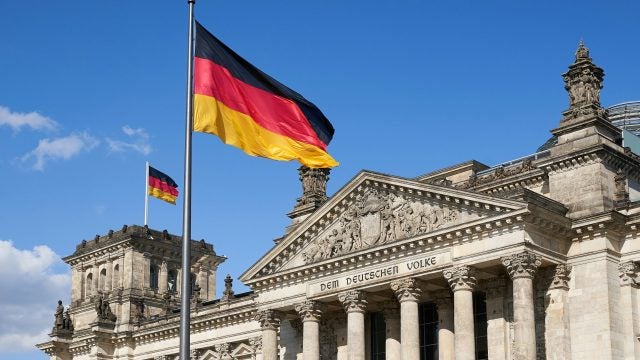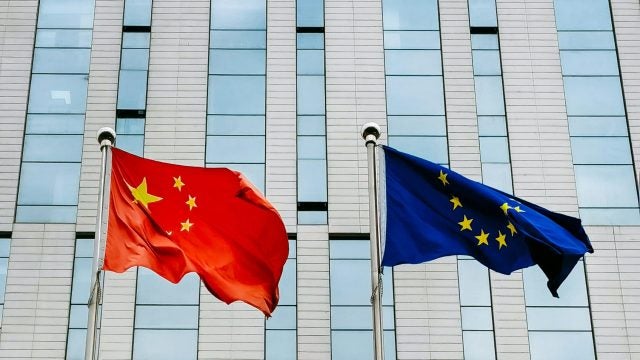
Title: COVID-19: An Accelerator for Sustainable and Smart Urban Transitions?
When envisioning a post-pandemic world, a window of opportunity to couple economic recovery with sustainability measures presents itself. This is particularly the case for cities, many of which have negative environmental impacts but also act as engines of change at both a local and global scale. As a result, COVID-19 recovery packages have the momentum to accelerate transitions to sustainable and smart cities.
A Turning Point for Sustainable and Smart Urban Transitions?
The COVID-19 pandemic has caused widespread and tragic destruction in terms of human lives, and, through efforts to mitigate loss of life such as lockdown measures, the pandemic has further incapacitated economies around the world. To this effect, recent estimates suggest that the global economy contracted by -3.3 percent in 2020. This sharp economic impact is shown in Figure 1. However, in the process of dealing with such a devastating crisis, certain positive trends have emerged. This article speaks to three of these trends: the increased importance of cities in managing a global crisis, the emphasis placed on recognizing COVID-19 as a window of opportunity to advance sustainability objectives, and the ground breaking levels of digitalization that COVID-19 has brought. By focusing on the intersection of these three factors, and as long as supportive governmental policies follow (at local, national, and regional scales), COVID-19 has the potential to accelerate the progress of transitions to sustainable and smart cities.

Figure 1: Average global real GDP growth (Annual percent change), 2000 – 2020. Data source: IMF, 2021; graph source: Authors’ contribution.
Rethinking the Modern City for a Post-COVID-19 World
Due to the higher incidence rates of COVID-19 in urban areas as well as the localized necessity of containing the spread of the virus, cities have been at the forefront of managing the pandemic. The resilience strategies implemented to maintain city operations and keep the public safe during this time have developed across contexts. This has given renewed strength to local authorities and has shown how city governments can be agents of change in both national and global contexts. In the scope of reconceptualizing cities for a post-COVID-19 world, a common theme heard is to “build back better”. Simply put, this means the recovery process not only entails basic measures to restore economic stability, but also calls for fundamental and innovative action to embed recovery with sustainability measures. By sustainability, we refer to development in a manner that, in addition to economic advancement, includes social progress and the protection of the natural environment. This echoes the increasing role that cities have in managing the climate crisis.
The post-pandemic recovery has been seen as a window of opportunity for the implementation of sustainability measures since, effectively, lockdown measures gave global society a glimpse of what can quickly happen when consumption and production are drastically altered. For example, global carbon emissions dipped 6.4 percent during 2020. Cities are major economic hubs, producing 80 percent of global GDP, but they also account for between 60-80 percent of global energy consumption, 75 percent of carbon emissions, and over 75 percent of natural resource consumption. If cities recover without returning to pre-COVID modes of operation, some of these benefits can be locked in and support sustainable urban transitions.
The final trend noted was the uptake in technology during the pandemic. This increased use of technology has shown how we can live differently and still participate in society, as well as the benefits technologies can bring to cities. In Florence, for instance, sensors and cameras were used to track city traffic to better monitor the compliance with lockdown measures, and in Montevideo, the city developed a dedicated COVID-19 webpage that provides citizens with updated information on the ongoing pandemic. While some of these changes were only temporary, several of these trends are planned to last, such as the continued use of sensors and cameras for traffic management.
The Potential of Sustainable and Smart Cities
Smart cities – or the idea of cities leveraging technological solutions to improve the quality of life for citizens and reach sustainability objectives – have grown in popularity amongst policymakers around the world. During COVID-19, there has been widespread use of these types of solutions to manage the pandemic. Moreover, certain smart solutions adopted in cities will persist in a post-COVID world, such as digitalization of energy management systems. Generally, with regards to environmental sustainability, it has been suggested that smart city projects can reduce greenhouse gas emissions by 10-15 percent, water consumption by 20-30 percent, and unrecycled waste by 10-20 percent. These benefits are simultaneously accompanied by economic gains, such as a potential growth of jobs by 1-3 percent and a reduction of living costs by 1-3 percent.
In terms of the effects of the pandemic on sustainable and smart city progress, local officials around the world have acknowledged setbacks, but still stay adamant in their mission to implement smart city solutions. This is in part due to the recognized economic benefits of digitalization. For instance, in Vancouver, a smart city LED lighting solution is continuing as planned because it offers an opportunity for cost savings and improves energy efficiency. This drive is echoed in the forecasts for smart city spending in the next five years as the predicted market size of the global smart city industry is set to be $820.7 billion by 2025. Although municipal revenues are expected to decrease in the upcoming year due to the pandemic, substantial national and regional recovery plans can help spur local sustainability investments, highlighting the importance of cross-level government cooperation and coordination. It should be noted that some sustainable and smart city projects were abandoned once the pandemic began. Most famous perhaps is the now discarded smart city project in Toronto, originally spearheaded by SideWalk Labs of Alphabet, Inc. (the parent company of Google). Economic strain due to COVID-19 was cited as the main reason for the failure of the project, although it received widespread public criticism before the pandemic began. As a result, it is not immediately clear how successful the project would have been in the absence of COVID-19.
Driving the Transition Through Carefully Planned Recovery Packages
The momentum for smart cities can be channeled through massive economic recovery packages that aim to simultaneously drive economic growth and employment, overhaul infrastructure, and reach sustainability and climate objectives, such as improved resource management and reduced carbon emissions. The proposed (but not yet passed) “American Jobs Plan” in the United States offers a vision to repair the American economy through rebuilding domestic infrastructure. This plan includes a focus on smart technologies to improve transport and better manage natural resources. Experts suggest this funding should be focused, in part, on developing smart cities because of their potential to improve urban efficiency, spur economic activity, and drive sustainability. On the other side of the Atlantic, the European Commission has paired its recovery package with its “European Green Deal” to couple economic growth with sustainability measures. This aims to improve, amongst other objectives, the sustainability of cities through various “smart” technologies, notably smart mobility. With $621 billion in investment proposed for upgrading transportation infrastructure and increasing resilience through improved services and the protection of natural resources on the American side (out of an overall more than $2 trillion in prospective funding) and another 750 billion Euros in funds – or around $905 billion – just within the temporary recovery instrument in Europe, there are strong economic drivers for sustainable and smart urban solutions. Several other countries around the world have designed extensive recovery packages that contain similar measures. For instance, the Ghanaian “Socio-economic Response and Recovery Plan” maps out a sustainable recovery agenda, underpinned by increased access to technology. One proposed solution is to promote new business models in the economy, such as e-commerce. Turkey also stands out due to the country’s commitment that 100 percent of economic recovery funding is “green”, or aimed at simultaneously improving environmental conditions. Thus, recovery efforts are seen as both a means to overcome the negative economic effects of COVID-19 through investments for future growth, as well as a way to enhance sustainability and meet the related objectives.
The new policies point to a combination recovery of economic stimulus, sharper funding for sustainability measures, support for digitalization, and the increased role of cities in pursuing these efforts. As a result, COVID-19 recovery packages have the potential to drive sustainable and smart urban transitions. However, this is not a given. As municipalities are expected to face reduced financial capacity as a result of the pandemic, directing financing to local levels is deemed as essential. Therefore, there is a heavy reliance on policymakers to guide decision-making and financing into sustainable and smart urban projects. Careful attention paid to equality will ensure the recovery efforts are felt by all citizens, especially because addressing poorer areas first may have positive economic and well-being effects overall.
Going Forward with Sustainable and Smart Urban Transitions
Three conclusions can be drawn concerning the potential progress of sustainable and smart urban transitions:
- While some projects have suffered setbacks or have been cancelled all together, the importance of cities in supporting change, the climate crisis, and COVID-19 recovery has the momentum to accelerate transitions to sustainable and smart cities.
- Municipal funds are low after cities have spent over a year managing COVID-19. However, national or regional economic recovery packages aimed at revamping infrastructure and inducing sustainability transitions can be channeled to smart city projects. For this, collaboration across government scales is critical.
- Finally, this transition will not happen spontaneously. At the national level, and especially at the local level, comprehensive plans and strategies can guide the achievement of these ambitious goals.
. . .
Dr. Jessica Clement is a post-doctoral researcher at the Smart City Institute (HEC ULiège), where she researches public policies and strategies for smart cities and sustainable urban transitions. Previously Jessica researched policies for improved natural resource use and management. She has a PhD in Economics from the University of Paris 1 Panthéon-Sorbonne.
Prof. Nathalie Crutzen, PhD in Business and Economics, is a professor at HEC Liège – Management School of the University of Liège and Academic Director of the Smart City Institute. Nathalie has developed, over the last years, various research projects on sustainability, strategy and related management (control) on sustainability innovations, and sustainable and smart cities. She has moreover published widely on these topics.
Image Credit: Pxhere
Recommended Articles

This article contends that South Africa’s 2025 G20 presidency presents a critical opening to shape governance of critical mineral supply chains, essential for renewable energy, digital economies, and national…

Germany’s economy is being throttled by a more competitive China that has usurped its previous manufacturing dominance in many industries. In response, Germany has doubled down on the China bet…

In 2021, the European Union (EU) attempted to assert itself in the Indo-Pacific arena to increase its geopolitical relevance by releasing an ambitious and multifaceted Indo-Pacific Strategy. However, findings from…